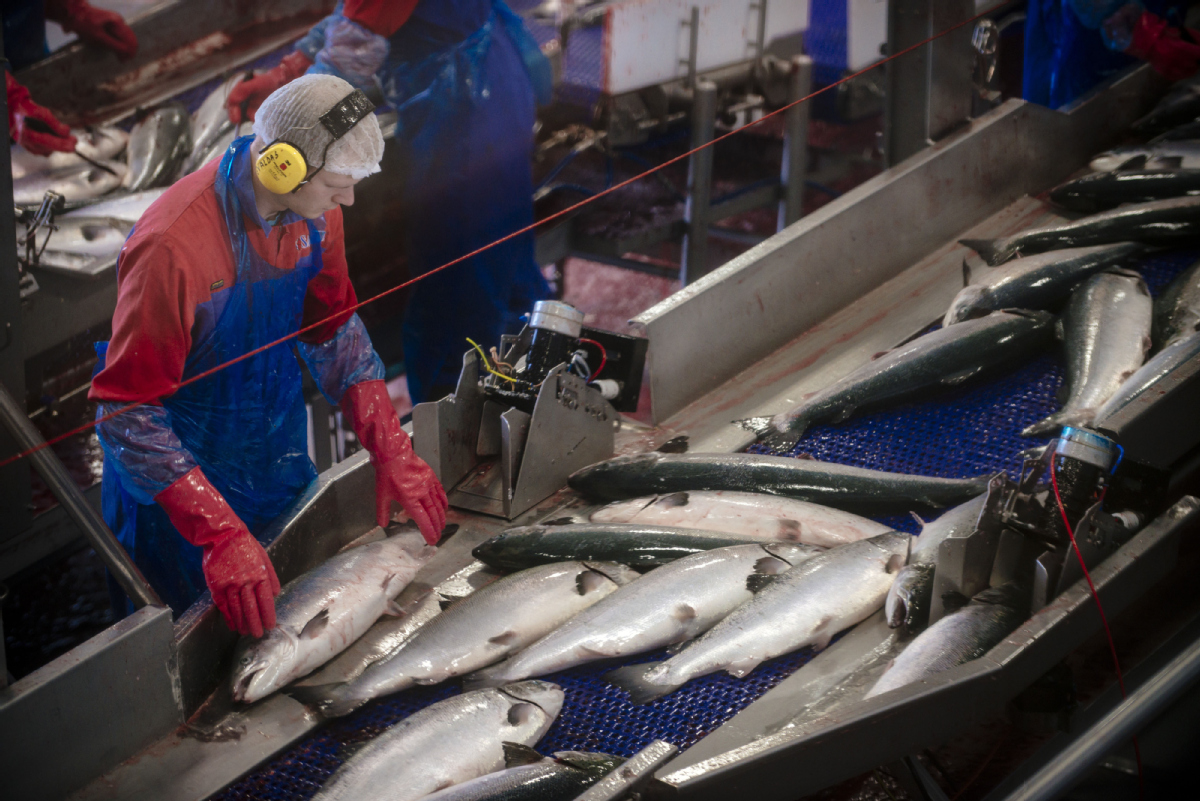
A worker arranges fresh salmon as they pass along a conveyor belt at Salmar ASA's InnovaMar harvesting and processing facility on the island of Froya, Norway. [Photo/Agencies]
The Norwegian fishery industry is looking to further consolidate its gains in China, after notching up a fivefold growth in salmon exports during the first six months of the year.
According to Sigmund Bjorgo, director of the Norwegian Seafood Council for the Chinese mainland and Hong Kong, three more Norwegian provinces - Sor-Trondelag, Nordland and Troms - have got the green light from China for salmon exports.
"Since China eased market access last November, Norwegian salmon exports to China have dramatically increased," he said. "During the first six months of this year, the export volume reached 366 million yuan ($54.6 million), up 544 percent year-on-year."
Bjorgo expects exports to further increase by 300 percent and reach 21,000 metric tons in the second half compared with 7,045 tons in the first half.
"China's consumption of Atlantic salmon last year was around 90,000 tons and will reach 240,000 tons in 2025," he added. "The key growth drivers are the higher disposable income of the burgeoning middle income group, increased online and offline sales channels, and rising popularity of salmon in second and third-tier cities."
The policy to increase salmon imports from Norway came three days before China officially implemented 25 percent tariffs on a number of products from the United States, including salmons and lobsters. According to previous report by Zacks, an investment research firm, salmon was the biggest seafood category US exported to China, accounting for $318.5 million in 2017.
"We are deeply disappointed with the retaliatory tariffs," the National Fisheries Institute, a US seafood trader's association said in a statement.
However, the plan to increase salmon imports from Norway was a part of China's deepening opening-up strategy, Bjorgo said, adding that there were no direct links between the 25 percent tariff on US products and China's decision to import more from Norway.
"The US salmon exported to China is frozen wild salmon and goes mainly to the Chinese processing industry and later re-exported out of China," he said. "The Norwegian salmon is farmed Atlantic salmon and is consumed in the Chinese domestic market. We see no direct link between the two."
Since July, China has further lowered import duty on a number of consumption goods, including reducing the tariff on aquatic products from 15.2 percent to 6.9 percent.
"To further increase imports, including lowering tariffs, will provide the domestic market with more diverse products for catering to daily demand," said Zhao Ping, director of the research department at the China Council for the Promotion of International Trade.


